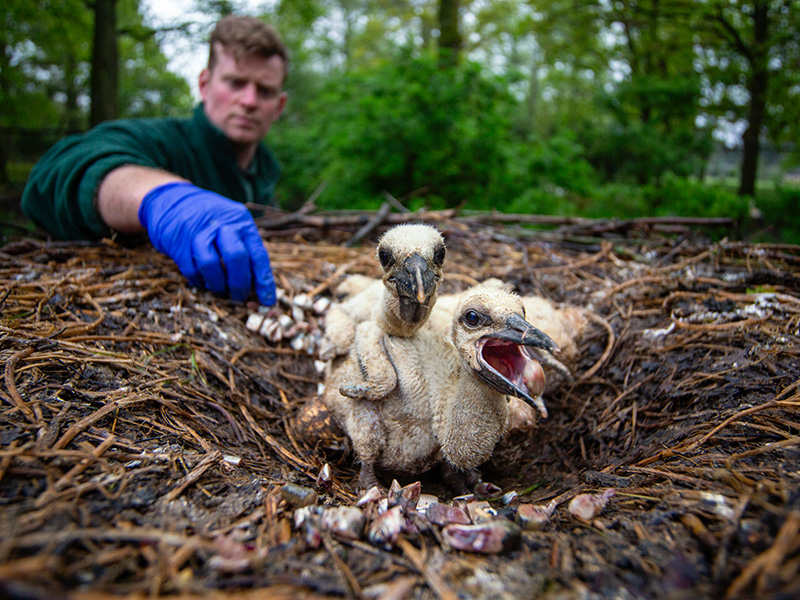White Storks Take Flight Again Thanks to Cotswold Wildlife Park

Rewilding Britain’s Skies: Cotswold Wildlife Park Helps Bring Back a Flying Icon Not Seen in the UK Since the 15th Century
Once a familiar sight across Britain, White Storks disappeared as a breeding species back in the 1400s due to habitat loss, hunting and even their role as a delicacy at medieval banquets. Their symbolism shifted over the centuries – once associated with good fortune and new life, they were later persecuted during the English Civil War for their supposed link to rebellion. For centuries, it seemed inevitable that these iconic birds would only be remembered in history books.
Now, thanks to the pioneering White Stork Project, hope is returning to Britain’s skies. The project – the first rewilding scheme of its kind in the UK – aims to re-establish at least 50 breeding pairs of White Storks across southern England by 2030. Since its launch in 2016, the initiative has brought together the Roy Dennis Wildlife Foundation, Knepp Castle Estate, private landowners in Sussex, and Cotswold Wildlife Park, which has played a vital role in breeding birds for release.
For the eighth consecutive year, Cotswold Wildlife Park has successfully bred chicks for the project. 2025 marked the most successful season yet, with a record-breaking 48 chicks reared. This brings the Park’s total contribution to over 200 birds bred for release. The young storks, hatched in May, were transferred to Sussex earlier this summer and released into the wild.
Jamie Craig, Curator of Cotswold Wildlife Park, explained: “We received our first batch of birds in late 2016. This enabled us to set up a breeding group of fifty storks at the Park and also send enough birds to our project partners in Sussex to establish small sedentary groups there. All these birds were imported from Warsaw Zoo in Poland and are rehabilitated injured birds from the wild that, unfortunately, could not be released due to disabilities that would have affected their survival had they been returned to the wild.”
Curator Jamie Craig with a White Stork bred at Cotswold Wildlife Park ahead of its release in Sussex for the White Stork Project
Since then, the Park’s husbandry team has carefully nurtured the birds, supporting breeding pairs through nest building, monitoring egg laying and assisting with feeding chicks to give them the best chance of survival. Once fledged, the young birds are ringed, sexed, and monitored before being transferred to release pens in Sussex.
Jamie added: “So far, we have transferred over two hundred young storks to Sussex for release. Many have successfully crossed the Channel and followed traditional migration routes down through Europe and into Africa. Storks do not return to their nesting ground until they are four years old, so we are all hoping for the first Cotswold Storks to return to England and become a permanent breeding fixture in the landscape once again.”
Each bird carries a unique coloured identification ring. Members of the public who spot a White Stork in the British countryside are encouraged to report sightings via the White Stork Project website.
To find out more about the Park’s conservation work and to plan a visit, see Cotswold Wildlife Park.
Explore Gloucestershire
27 August 2025
For further information.
OTHER NEWS
